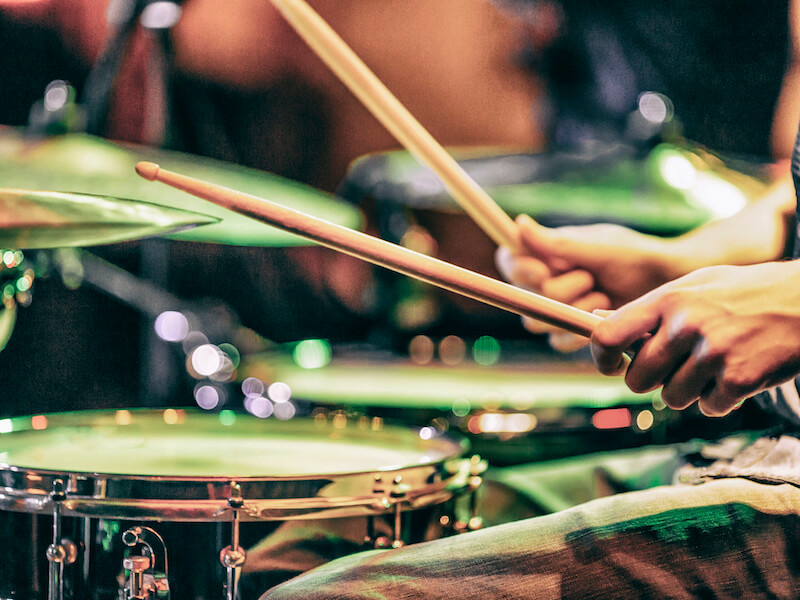
Musicians rock. Their songs bring us so much enjoyment. But music is a lot more powerful when it’s loud, and that can be a hearing hazard. The musicians themselves are at an increased risk of hearing damage since they are subjected to loud music nearly every day.
Whether your livelihood relies on music or not, you’ll still want to be able to hear your favorite songs when you’re pushing 60, 70, or 80. For musicians, protecting their hearing is the key to a lengthy and successful career. For the rest of us, ear protection is the secret to a lifetime of musical fulfillment and enrichment.
Oftentimes it can be surprising how loud music can get
Most people would say that a jet engine is really loud.
Is music really that loud? If you ask someone whether an acoustic guitar or a lone violin is noisy, they may not reply so quickly. Imagine their surprise when they discover the reality: that music is indeed loud! Even classical music can reach relatively high volumes that can easily harm your hearing.
A violin, for instance, can produce sounds in excess of 90 dB. A leaf blower is around this loud. In Europe, for instance, they have laws that require ear protection for anyone who works in a work environment where there is noise above 85 dB.
And your hearing can be seriously compromised over time if you’re working with music every day, especially if you don’t use ear protection.
Can you protect your ears from noise damage?
Okay, now you know that musicians need to safeguard their hearing (especially if they want to continue rocking out for many years). So what can musicians do to protect their hearing and still take pleasure in the music they love so much?
Well, here are a couple of easy things musicians can do:
- Take breaks: Much like any part of your body, your ears can become exhausted and may need a little break. So take frequent breaks from the noise. This will help stop your ears from getting overwhelmed with noise (and damage). With regard to hearing, how long you’re exposed is nearly as important as how loud it is. Taking breaks can be the difference between just the right amount of stimulation and too much!
- Track your volume: Everybody knows the old saying “knowledge is power”. So knowing volume levels of sounds around you will help you safeguard your hearing. Keeping track of the volume on amps and PA systems is part of it. But you can also keep track of day-to-day volume levels of environmental noises using a decibel meter app that you can download on your cellphone. You will need to make a few changes if the meter regularly reads above 85 dB.
Use ear protection
Of course, the single most effective thing you can do to safeguard your hearing is simple: wearing ear protection of some kind. Many musicians are hesitant to use hearing protection because they’re concerned it will impact the clarity of sound they hear, as well as dampening the volume. That isn’t always true, depending on which kind of hearing protection you choose.
- Ear plugs made primarily for musicians: Most individuals are likely acquainted with disposable ear plugs. They don’t always fit perfectly, but they do reliably block a lot of sound. They aren’t difficult to find, aren’t expensive, and can be thrown away easily. And they aren’t best suited for musicians. However, by paying a little more, you can purchase high-quality earplugs made specifically for musicians. These earplugs use fancy manufacturing tricks (mostly they’re made out of very distinct materials and are designed to fit comfortably in the ear) to preserve audio clarity while diminishing the noise you experience by about 20dB. This option is perfect for musicians who need a light to moderate level of protection (and who don’t have a ton of money to invest in earplugs, or are likely to misplace them).
- Electronic earplugs: The same basic functionality found in non-electronic earplugs can be found in electronic earplugs. The earplug itself will block most of the sound. What you hear will instead be routed in by the earplug itself. For individuals who work in really loud environments and need better control of the volume, these earplugs are perfect.
- In-ear monitors: Most music is electronic these days, or at least amplified by electronics. An in-ear monitor takes those electronic signals and transmits them directly to a device placed in your ear (called an in-ear monitor). The majority of monitors are little speakers that fit snugly and block out the majority of sound while playing sounds you want to hear at safe volumes. So you control the volume level and are able to hear sound in an accurate and clear way. In-ear monitors are useful for those who work primarily with electronically amplified instruments.
Safeguard your hearing, and protect your career
It’s never too late to take measures to protect your ears, but it’s definitely a good idea to begin sooner rather than later. With solutions available at nearly every price point, there are simple ways for everybody to safeguard their hearing and their future. Remember, hearing protection for a musician is an investment in your career. It’s one way to be certain you’ll be making incredible music for years (maybe even decades) to come!
Don’t quite know where to start? Call us today, we can help!